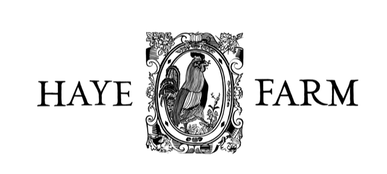NOSE-TO-TAIL EATING
When you keep animals you get to know their personalities and characters – the grumpy sows, the chirpy, optimistic or lazy ones; the stubborn ewes or the friendly cows. You value them and their lives and the work, effort and time that goes into producing a cut of meat and so we take our butchery very seriously, taking care not to waste a thing.
Good butchery is an art and our butchers take their time, assessing each carcass to judge the amount of time it should hang for; which cuts should be taken from it and whether any additional ageing is required. Hanging and ageing the meat tenderises it and lowers its moisture content, concentrating the flavour and reducing the liquids released through cooking. Different cuts require different approaches; a fillet of beef will be perfect after three weeks’ hanging, while sirloin or rump might benefit from being left to age for longer.
Just as cuts differ, so too not every animal will have the same treatment – skinnier cows might not need to hang for as long for example, and we’ll only ever make short ribs from a really plump cow where there’s enough fat content on the meat. If it’s too lean, we’ll use it for dice or mince.
If you think about the size of a cow or a pig and the range of cuts available in the supermarkets, you’ll realise how much of the animal ends up as mince. We offer mince, of course, but we’re also keen to encourage a greater appreciation for different cuts of the animal, so you’ll also find a whole host of those rarer, often overlooked cuts such as the cheeks, the tail or the hanger steak. All are expertly trimmed and, with the right cooking, they’re every bit as delicious as a rump or sirloin steak, and often better value, too.
Good butchery is an art and our butchers take their time, assessing each carcass to judge the amount of time it should hang for; which cuts should be taken from it and whether any additional ageing is required. Hanging and ageing the meat tenderises it and lowers its moisture content, concentrating the flavour and reducing the liquids released through cooking. Different cuts require different approaches; a fillet of beef will be perfect after three weeks’ hanging, while sirloin or rump might benefit from being left to age for longer.
Just as cuts differ, so too not every animal will have the same treatment – skinnier cows might not need to hang for as long for example, and we’ll only ever make short ribs from a really plump cow where there’s enough fat content on the meat. If it’s too lean, we’ll use it for dice or mince.
If you think about the size of a cow or a pig and the range of cuts available in the supermarkets, you’ll realise how much of the animal ends up as mince. We offer mince, of course, but we’re also keen to encourage a greater appreciation for different cuts of the animal, so you’ll also find a whole host of those rarer, often overlooked cuts such as the cheeks, the tail or the hanger steak. All are expertly trimmed and, with the right cooking, they’re every bit as delicious as a rump or sirloin steak, and often better value, too.
